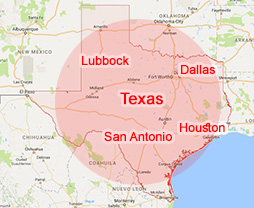Family Violence Emergency Protective Orders
PROTECTIVE ORDERS
A. Definitions
1. A family protective order is an order issued pursuant to the Texas Family Code from a court of competent jurisdiction, or a protective order from another jurisdiction, directing a named person (respondent) to do or refrain from doing specified acts toward any family or household. A protective order involving a divorce is valid until the divorce action is disposed of or the issuing court vacates the order.
a. Protective order from another jurisdiction means a protective order rendered by a military court or a court of another state, tribe, or territory. Unless a law enforcement officer knows that the protective order from another jurisdiction has expired, the officer must rely on:
(1) a copy of the protective order provided by the person; and
(2) a statement from the protected person that the order remains in effect.
2. A temporary ex parte protective order is effective for the period specified in the order not to exceed twenty (20) days from the day it was served on the respondent. Police officers do not have authority to enforce this type of order unless the officer can determine that the temporary ex parte order is valid and the respondent has been served with notice of the order being in effect.
B. Violations of the type of order in paragraph A (1) above may be criminally enforceable as a Class A misdemeanor pursuant to section 25.07 of the Texas Penal Code (Violation of Protective Order).
C. Certain violations of the orders included in paragraph 1 above allow officers to arrest without a warrant pursuant to section 14.03(a)(3) of the Texas Code of Criminal Procedure.
1. Prior to making an arrest, officers must have confirmed the existence of a valid criminally enforceable protective order. Verification can be achieved either through contacting the Police Information Center or at the scene inspecting a certified copy of the order which has not expired. Officers must accept the presentation of a certified copy of an enforceable order which has not expired as proof of validity.
2. Whenever an officer determines that a protective order has been violated and that violation is punishable under section 25.07 of the Texas Penal Code, the officer must effect an arrest if the actor is still on the scene. In any event, an offense report must be made with all the necessary information and copies directed to the judge of the court issuing the order. If an arrest was made based upon the presentation of a certified copy of an order, the report must include the following information:
a. Cause number.
b. Issuing court.
c. Date of issuance.
d. Style of case.
e. County of issuance.
D. If Texas Penal Code section 25.07 has not been violated, but other provisions of the protective order have been violated, the officer must make an incident report which must include the information contained in paragraph C above. The title of the incident report must be Violation of Family Protective Order. On the first two lines of the narrative, the officer must direct copies of the report to the judge issuing the protective order. If any other criminal offense occurred, the officer must follow the usual arrest procedures applicable to the situation as it exists.
E. Responsibilities
1. All protective orders received by this department must be immediately forwarded to the Identification Unit and the Police Information Center. Criminally enforceable protective orders must be organized in such a manner that they will be readily accessible at all times.
2. The following information must be easily retrievable at all times.
a. Protected person’s name.
b. Respondent’s name.
c. Type of order.
d. Expiration date.
e. Protected addresses.
3. On request, the Police Information Center must inform officers of the specifics of any protective order, to include any acts prohibited by the order.






